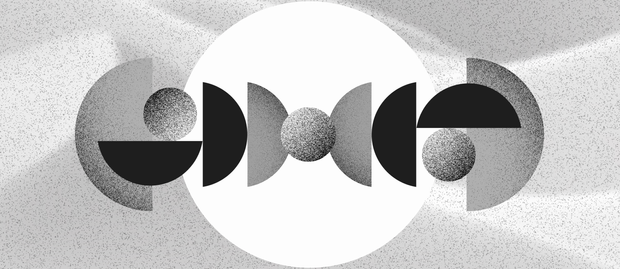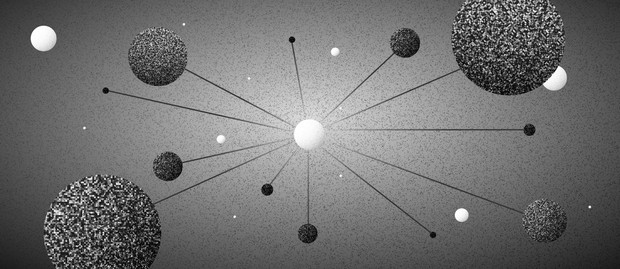Non-fungible tokens (NFTs) are new digital assets based on blockchain technology that recently have exploded in popularity, with collectors spending millions of dollars on digital artworks. While they enable collectors to verify the provenance and authenticity of assets, NFTs still exist in the digital realm, presenting individuals with challenges and threats not only relevant to traditional art collecting but also more specific to the virtual landscape. Moreover, being in its early stages of development, the NFT market may lack means, such as governmental regulations to enforce security measures, protect intellectual property, and punish criminals.
Articles
6 min read
8 min read
Since 2014, when NFTs, also known as non-fungible tokens, first emerged on the digital landscape, these unique digital assets have gradually established themselves as a valuable investment opportunity. By providing a blockchain-based transaction ledger, a unique item linked to the token, and immutable proof of ownership on it, they have revolutionized the way organizations engage their audience in various areas, including art collecting.
6 min read
In the last two years, crypto art has faced many challenges and skepticism. As a result, its popularity among the general public, and more specifically, art enthusiasts, has declined, leading some to wonder whether it’s the end of these assets. Nevertheless, despite all the hardships and news about lost value, the crypto art movement is experiencing a powerful resurgence. Defying all odds and capturing the attention of artists, collectors, and enthusiasts alike, it is now bursting with new activities like Christie's New Wave: Miami Edit — an event that celebrates the resurgence of crypto art and stands as a testament to its resilience.
7 min read
The success of art events is not solely based on the grandeur of its exhibits or the prestige of its participants. Rather, the balance between trend and tradition, as well as the ability to challenge perceptions through unique techniques, is what sets apart genuinely remarkable events. This is what allows major art fairs such as Frieze and TEFAF to become the most recognizable events in the world.
7 min read
While the hype around NFTs may not be as significant as it was a few years ago, these digital assets can still generate thousands, or even hundreds of thousands, of dollars in extra revenue for their creators. This trend is particularly evident in the art industry, which embraced NFTs after the initial backlash decreased, allowing the community to fully realize their true potential.
7 min read
Nowadays, non-fungible tokens have gradually become a recognized part of the art industry. This new blockchain-based technology provides an immutable proof of ownership and a transparent transaction ledger, ushering in a new age in the history of digital art collecting and opening doors for many individuals who aspire to become creators.
6 min read
Since their emergence, galleries have assisted creators in gaining recognition among potential clients, protecting intellectual property rights, and facilitating deals with collectors. However, with the rise of the digital era, galleries were forced to upgrade their infrastructure in the face of new challenges, although their main objectives remained almost unchanged.
2 min read
"Salvator Mundi," known as the most expensive artwork worldwide, is about to be turned into non-fungible tokens (NFTs) and sold to the public. According to the leading art reporter, The Art Newspaper, the painting will be minted in collaboration between ElmonX and Bridgeman Images. The sale will be accessible for purchase from 12 August, although the terms are still to be announced.
7 min read
Since their inception, non-fungible tokens (NFTs) have gradually become widely accepted assets by both the general public and specialized institutions in various industries. Moreover, the valuable features and accessibility of art NFTs ensured their adoption in the art industry and revolutionized the way masterpieces are created, bought, sold, collected, stored, and showcased. As a result, they are exhibited not only on digital platforms like Digitised.Art but also at famous art events or museums dedicated specifically to art NFTs.
8 min read
Since their emergence, non-fungible tokens (NFTs) have become a source of concern for many galleries and artists over their intellectual property. As with any new technology, there were no regulations to effectively oversee the market, which made it more susceptible to fraudulent activities.
7 min read
In the Web 3.0 age, cutting-edge technological solutions are gradually becoming more popular and finding their way into various fields, including the art industry. One such solution is non-fungible tokens (NFTs), unique assets situated on blockchain. NFTs enable galleries and their affiliated artists to provide proof of ownership for collectors within the digital landscape.
7 min read
Non-fungible tokens, or NFTs for short, are a relatively new class of digital assets. Powered by blockchain capabilities, NFTs can be transparently and securely linked to a painting, photo, statue, or any other exhibit, providing owners with a diverse range of potential utilities and immutable provenance. As a result, they empower organizations such as art institutions to monetize their physical property and harness the benefits of the digital realm.
6 min read
As with any other year, marked the start of the 2023 summer for the art community. The event showcased 284 art installations from 36 countries and regions, making it a must-attend destination for art connoisseurs worldwide. Thus, a never-ending stream of visitors was expected, even at the VIP opening on Tuesday, the 15th, resulting in long queues and limited free space at some art booths.
7 min read
NFT, short for Non-Fungible Token, is a unique asset that can help organizations and individuals represent ownership over specific items in a digital realm. Unlike cryptocurrencies, NFTs cannot be exchanged on a one-to-one basis. Instead, they are one-of-a-kind assets that revolutionize the way people engage digital content by utilizing blockchain technology to record ownership and provide new monetization opportunities for owners.
8 min read
In a new fast-paced world driven by cutting-edge technologies, the digitalization of assets, services, and products becomes one of the tools that allow organizations to get the upper hand on competitors. No matter the industry or the object, it helps market players stand out in overcrowded business realms and create new, valuable revenue streams to fund new projects or mitigate crises.
6 min read
NFT, or non-fungible token, is a digital asset representing ownership or proof of authenticity of a unique item, like an artwork, on a blockchain. Each NFT provides a transparent and immutable record of ownership and helps creators monetize their digital works. At the same time, collectors can purchase these unique digital assets in a secure and decentralized manner.
8 min read
Art exhibitions are an integral space for galleries, visionaries, artists, and collectors to interact with each other. A venue to discover new trends, learn from industry leaders, get inspired by the works of other artists, and, most important, expand their network.
6 min read
How to Turn Physical Art into a Digital Asset with NFTs
6 min read
In recent years, NFTs have become a prominent topic in the digital world, captivating the attention of both enthusiasts and the mainstream audience. Although there may be a few individuals who have not yet heard of NFTs, it is difficult to fathom how they managed to overlook the emergence of this new digital asset and the surrounding hype.
6 min read
The world of art trade can often seem to run counter to harsh realities like war, inflation, economic downturns, and political crises.



















